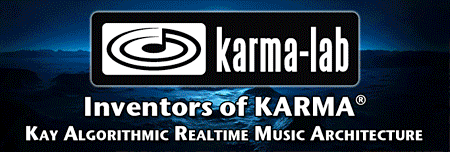danatkorg wrote:The OASYS was priced the same as all other professional Korg workstations (Triton, M3, etc.), using standard formulas based primarily on the hardware cost (which in the case of the OASYS was quite expensive). This is why options (LAC-1, MOD-7, EXs3) were priced separately.
I've read your statement in the past but tried not to get into deep because again I was held captive for the sake of the term Open. I find it hard to believe that the pure hardware cost for the Oasys alone is worth $8,000 unless there has to be some kind of hidden cost behind it-- the software development cost.
I’m pondering whether to draw a conclusion from your statement that no extra cost was incurred for Korg, Inc from legally needing to bind the term *Open architecture* aside from the standard formulas for the hardware cost Korg insists on using on the Oasys. What I'm trying to do is to redefine the term Open (*the software term*) out of the hardware cost formulas you mentioned.
We can't put an equal weight on the software and the hardware when it comes to the development cost as software has a spill over effect. Also, the ratio of time to recover the fixed cost and the duration of marginal profit on the software might be quite different from the hardware side. Hence the *true* hardware cost really is the net profit margin needed to cover up the marginal cost of the each unit.
One implicit implication I’m getting from your statement is that the net profit margin gained from the sales of Oasys was never added to the software development cost for the M3 so to lower the overall marginal cost of the M3 instead of Oasys. That is, the software developments for the M3 and the Oasys were never a mutually dependent but a completely exclusive projects from one another. Another is that either mutual dependency or exclusiveness between the Korg R&D and the Korg Japan somehow impinged on one another as the Oasys project became rather *costly* (hidden cost) to *collaborate* (so called Open). I was getting an impression that Korg, Inc was somehow engaged in *Openly* blaming (hidden cost) on one another saying ‘we did our part but they didn’t’ so the ultimate hostage is you the customer unless the ransom (major hidden cost) is given. Unfortunately, the ransom has already been given.
If the Korg R&D claims they took no part in the development of none-open architect instrument such as the M3, the real blame or all the credit would fall on the Korg, Japan. This only goes to prove that the term Open Architect not only added the capital loss (true hidden cost) for the customers but also the discord (benign hidden cost) among the Korg, inc themselves.
I’m curious to know what the marginal cost for the software development (aside from the hardware) of the M3 might be so that Korg was willing to give out the major dream upgrade for the M3 free of charge in a hurry. On the other hand, was the marginal cost for the Oasys prohibitly costly compared to the M3 to warrant the extra charge for each lackluster upgrades on top of already prohibitive price?
I think it is sufficient to say that the marginal profit for the Oasys has come to a point of the marginal cost and that the Korg has already recovered the fixed cost associated with the production of the Oasys hence the decision to pull the plug. But the bottom line is that the term Open is here to stay with us for a while. I was the one that invented the term *Big O* for the Oasys.


